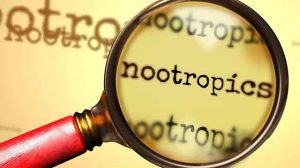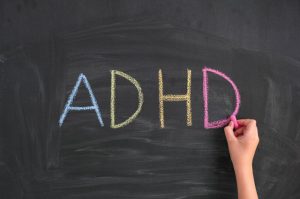The Dyslexia Research Institute Mission
| Ten to fifteen percent of the US population has dyslexia, yet only five out of every one hundred dyslexics are recognized and receive assistance. Approximately 60% of individuals diagnosed with attention deficit hyperactivity disorders are also dyslexic, however, their learning and language differences are often unrecognized because only the behavioral aspects of ADHD are addressed. Without the proper diagnosis and help, many of these dyslexics and ADHD individuals are only functionally literate, and are part of the forty-four million adults with only the lowest level of literacy. This limits their ability to find jobs and function independently within their communities. |
| Since 1975, the goal of the Dyslexia Research Institute, Inc. has been to change the perception of learning differences, specifically in the area of dyslexia and attention deficit hyper activity disorders (ADHD). With proper recognition and intervention, dyslexics and individuals with ADHD become successful individuals using their talents and skills to enrich our society. They may take their place alongside other individuals with dyslexia or ADHD, such as Woodrow Wilson, Thomas Edison, Albert Einstein, and Nelson Rockefeller. |
|
What is ADHD?
ADHD stands for Attention Deficit Hyperactivity Disorder. ADHD is a prevalent mental illness that affects both kids and adults. The most common symptoms of ADHD are having trouble keeping focus and hyperactivity, where children and adults alike have trouble sitting still. ADHD affects many parts, such as education, work, social relationships, and everyday activities. If you are not treated properly, ADHD can create poor self-esteem and social skills. It is possible for adults with ADHD to suffer from an increased sensitivity to criticism and an increased tendency to criticize themselves, possibly due to lifelong criticism. The first signs of ADHD in school-age children show up at this time due to school disruptions or difficulties with schoolwork. Boys are more likely to be diagnosed with it than girls, as the symptoms manifest differently. ADHD is not more common in boys, however. It is more common for boys to have hyperactivity and a variety of externalizing traits, whereas girls are typically inactive.(see link between testosterone and ADHD) The criteria for ADHD will often continue to be met by children as they grow up and display impairments that require ongoing treatment as they mature. However, ADHD can sometimes go undetected during childhood. Many adults are unaware they have ADHD. In a thorough evaluation, the patient is evaluated based on past and present symptoms, along with medical examinations and histories. Treatment for ADHD in adults involves medication, counseling, or both together. Typically, medical professionals will describe ADHD as a neurodevelopmental problem that affects performance in several areas, including learning, behavior, common motor skills, and overall memory. There is no cure for ADHD doctors work on managing the symptoms.
What is Dyslexia?
Dyslexia is when someone has trouble with reading and writing. When dyslexic, it is difficult to read efficiently and without making mistakes. Many may also need help with comprehension, basic writing, and spelling, even common words. However, the struggles come from something other than a lack of intelligence. Dyslexic people have problems with language. The number of people struggling with reading can grow as high as 17 percent. Dyslexia doesn’t go away. The good news is that teaching methods are available to assist them in improving their reading ability and managing their challenges. There is no age limit for a dyslexia test, but adult tests differ from child tests. Many people think that dyslexia is a vision problem. For them, the letters are reversed or written backward. Dyslexia, however, is a language issue. Even though dyslexia affects learning, it is not an intelligence issue. Many who have dyslexia are intelligent. Moreover, people with dyslexia have lived normal and successful lives, like actors and politicians. It is not uncommon for dyslexia to be detected further on in life when more complex skills are harder for people to get right. Reading comprehension, structuring sentences, and grammar are just a few. Dyslexia can only be diagnosed by a thorough evaluation by a medical professional specializing in that area who will go through several questions and small activities.
Institute Profile |
| The Dyslexia Research Institute operates Woodland Hall Academy and Dyslexia Research Institute Literacy and Life Skills (DRILLS), an adult program, provides parenting information, teacher training, advocacy and consultation, and research and development resources. The Institute’s director, Patricia K. Hardman, Ph.D., is a nationally known expert in the field of dyslexia and attention deficit disorder. She is a consultant for businesses, federal and state programs, correctional institutions, and educational programs throughout the country. |
|
Latest Articles & Updates
The Hardman Technique |
| The Hardman Technique is a complete multisensorial curriculum (reading, grammar, math and study skills) which is utilized by Dyslexia Research Institute as well as several other programs across the country. It has been specifically developed and designed for dyslexia/ADHD adults and children. Dyslexia Research Institute has field tested the methods, and continues to develop The Hardman Technique in conjunction with Hardman & Associates. The Hardman Technique Training Course is accredited at the Teacher and Trainer of Teacher levels by The International Multisensory Structured Language Education Council (IMSLEC). IMSLEC is a non-profit corporation formed in 1995 to accredit training programs that prepare specialists in multisensory language programs. This is the scientifically proven appropriate instructional method of teaching dyslexic individuals. This is the ONLY accredited MSLE Teacher Training program in Florida. IMSLEC (www.imslec.org) |
![]()








